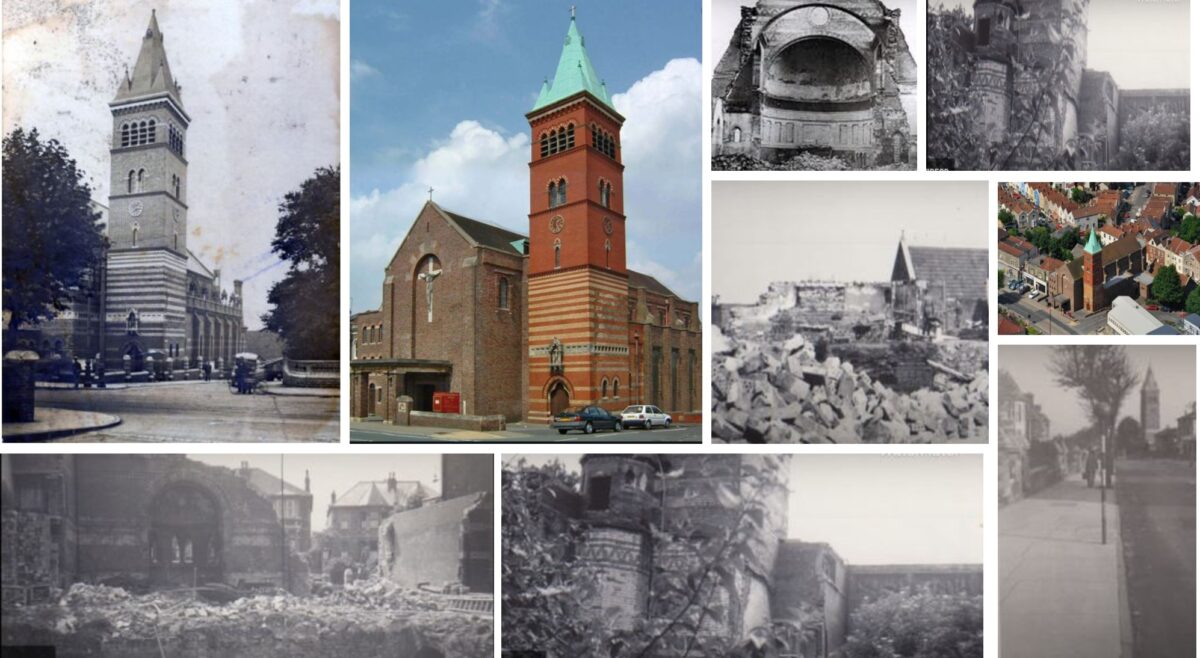
Let's rewind back to the 1950’s and Bray & Slaughter’s involvement in the rebuild of the Byzantine inspired Holy Nativity Church. The church was the first in the city of Bristol to be destroyed when bombing took place in November 1940 during the regions first heavy air raid. Please read the full and remarkable coverage of the church survival story……..
In the latter part of the 19th century the South side of Bristol was expanding due to industrial growth based around Temple Meads railway station and the Port of Bristol. The influx of workers needed to maintain new industries led to steady growth in the local population, and the previous hamlets of Knowle and Totterdown expanded to become suburbs of Bristol.
There was nowhere for this new population to worship. Fr Turton, a local assistant priest, was keen to provide a solution, so with the blessing of the Vicar of Bedminster a decision was made to erect a Mission Chapel dedicated to The Holy Nativity.
The site chosen was close to Arnos Vale Cemetery in Knowle, where a wooden church was built to serve the local residents, opening in 1865. From the start the Mission Chapel was well attended and grew significantly in size until it became necessary to find a larger, more permanent building to accommodate the congregation.
The location for the new church was on land donated by Messrs Goolden and Vowles on the Wells Road, Knowle, where the church has remained to this day.
In 1867 the existing Chapel was moved to a new site, and an appeal for building funds started. To save money the new church was developed in sections, with the nave of the old Mission Chapel being placed against the new chancel. The Mayor of Bristol laid the foundation stone of the new church on 18th June, 1870 and the new church was dedicated on Holy Cross Day, 14th September, 1871.
Included in the will of the late Mr Edward Feltham, a Church Warden who died on 26th November 1930, were several bequests to the church that included £5,000 for the completion of the Spire (or Tower) in memory of the Reverend Robert Ives.
Forward to 1940 and World War II the air raid began at around 6 pm and the first hour of the attack marked the destruction of the church. Due to the blackout regulations introduced some months earlier Evensong had been brought forward to 3:30 pm and this undoubtedly saved lives. By chance the Tower, Clock and Bells survived the destruction and it was said that as the flames consumed the church the clock continued to chime.
Approval to tender to rebuild the church was given in December 1950, so the architect was instructed to proceed with the application for a licence. By the beginning of 1954 a licence had been issued for the rebuilding of the Church in the sum of £57,805. This was significantly short of the estimated £60,992 for rebuilding fabric. An addition grant was made from the War Damage Commission, but it was clear that there would be a substantial shortfall and a restoration fund was started. On the 6th June that year, the Church Council approved the signing of the Rebuilding Contract, with the work expected to begin in early July, and finish in November, 1955.
We are so very proud of our involvement in this piece of Bristol history and delighted that this church and its’ beautifully patinated spire continues to thrive today.